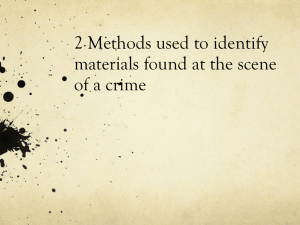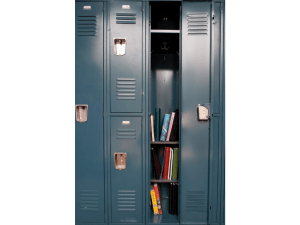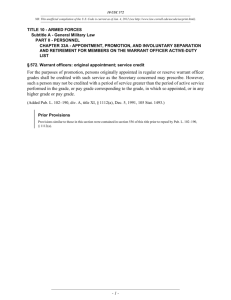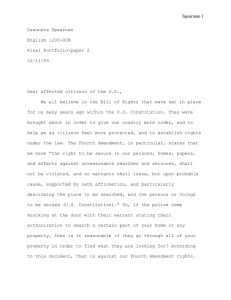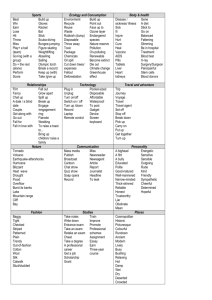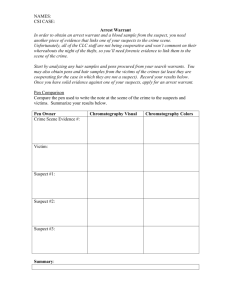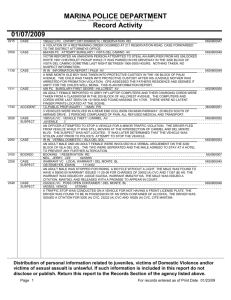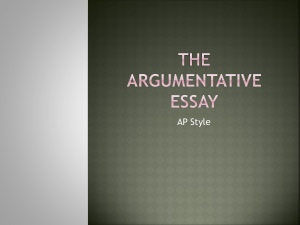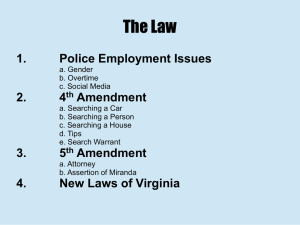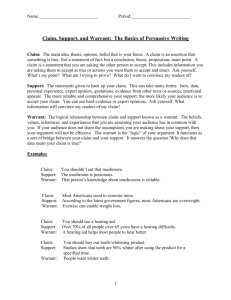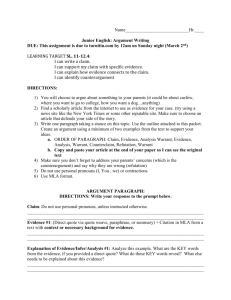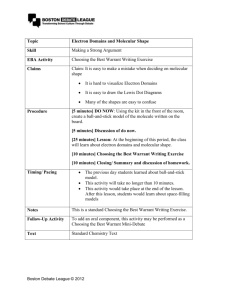Types of Evidence
advertisement
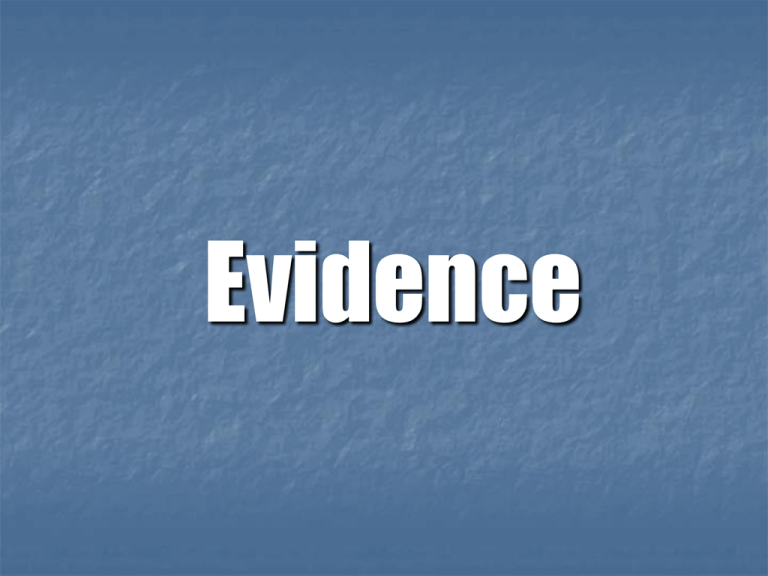
Evidence Direct Vs. Circumstantial Evidence Direct evidence is testimony or other proof which expressly or straight-forwardly proves the existence of a fact. It is evidence which comes from one who speaks directly of his or her own knowledge on the main or ultimate fact to be proved, or who saw or heard the factual matters which are the subject of the testimony. Circumstantial Evidence: Requires a judge or jury to make an indirect judgment or inference about what happened (more reliable than direct and it is objective). Confession Victim’s statement Eye witness statements Fingerprint Hair Fibers Direct evidence is different from circumstantial evidence, which is evidence that, without going directly to prove the existence of a fact, gives rise to a logical inference that such fact does exist. Physical Vs. Biological Evidence Physical Evidence: Nonliving, inorganic items. Fingerprint shoe or tire impressions tool marks Fibers Paint Glass Drugs Firearms bullet or shell casing Documents Explosive Accelerant Chemicals (petroleum byproducts). Biological Evidence: Organics (from humans, plants, or animals) Body fluids (blood, semen, saliva, urine) Botanicals (wood, pollen, plants) Insects Hair Reconstructive Evidence Reconstructive Evidence: Helps law officers gain a better grasp of what happened at the crime scene. Helps determine who did what, when, where, and how. Give location of victim and suspect and sequence of events. Broken glass Pried doors or windows Shoe prints Blood splatter Trajectory of bullets Associative Evidence Associative Evidence: Ties a suspect to the crime scene. Can also prove suspect’s innocence. Fingerprints Footprints Hair Fibers Blood Body fluid Individual Vs. Class Characteristics Individual Characteristics: Incriminates one person or a small group. DNA Fingerprint Class Characteristics: Evidence leads to or incriminates a large group of people (used more to exonerate suspect than convict). Blood type Type of gun Analyzing Evidence Identification: Determine what an item or substance is. - Is the brown stain really blood? Comparison: Does a suspect or a substance share a common origin with evidence. Is it a “match”? Linkage: Connects a suspect with a person, place or object at scene. Packaging Fibers: Dry trace evidence in druggist's folds, envelopes, and canisters Documents: In plastic covers. Liquids: Unbreakable, airtight, sealed and accelerants. Most Wet Biologicals: Non-air tight containers, to prevent mold, mildew, and decay. Evidence Marked With: Name and initials of person who found evidence Case number Name and description Witnesses if any Date, time, and location Search Warrants Search Warrant: The 4th amendment of the United States Constitution protects against unreasonable search and seizure. Warrant must include: time, place, specific items Probable cause is needed to obtain a warrant It must be approved by a judge Steps in obtaining a warrant: 1. Affidavit (location, items, and cause) 2. Preparing warrant (permission to search) 3. Signed by judge Specificity of a Search Warrant: Specific items (size crucial) Specific areas (probable location only) Any item not mentioned on warrant cannot be seized Search Without Warrant: Emergencies (life in danger, 2nd entry requires warrant) Eminent destruction of evidence (example: fire) Lawful arrest Consent by owner Order of Search: Fingerprints Tool marks and other prints Fibers/hair Vacuumed areas Created By: Chelsea Ragule
